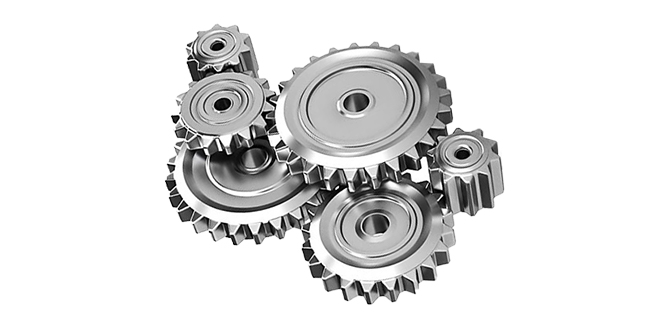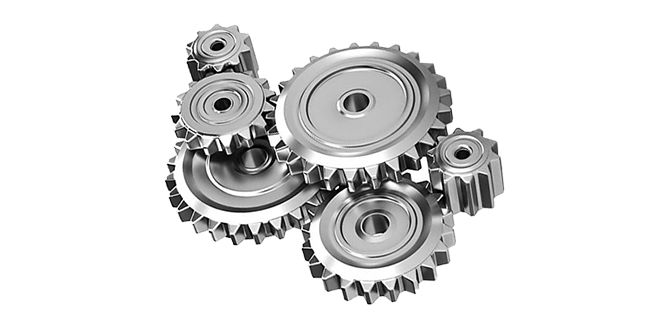- Contact Innally, Let you purchase forgings in China more favorable prices, products more assured!
- Hotline:+(86)15038323776 Email:innally@innally.com
What is locomotive gear forging?
- Category: Locomotive forging, Steel forgings
- |
- Date: 16/08/2023
locomotive gear forgings are designed to transfer power to the locomotive wheels, playing a key role in speed change and torque transfer. In locomotive operation, the gear must be able to withstand huge torque and impact loads, and have high strength, high precision and fatigue resistance.
- Can be customized according to the specific model
Product Details
Locomotive gear forging is an important part of locomotive transmission system, which is formed by forging process of specific materials. They are designed to transfer power to the locomotive wheels, playing a key role in speed change and torque transfer. In locomotive operation, the gear must be able to withstand huge torque and impact loads, and have high strength, high precision and fatigue resistance.
First of all, locomotive gear forgings have high strength. In the locomotive drivetrain, the gears are subjected to constant and frequent loads, such as forces from the engine, transmission box and axle box. In order to ensure the stability and reliability of the transmission, the gear must have sufficient strength to resist these external forces. Through the forging process, the grain structure of the material is homogenized and internal defects are eliminated, thus improving the strength and durability of the gear.
Secondly, locomotive gear forging has high precision. The locomotive transmission system requires high accuracy in transmitting power and torque. The fit clearance between the gear and other transmission elements must be kept to a minimum to ensure transmission efficiency and reduce meshing noise. Through the forging process, the precise control of the shape and size of the gear can be achieved, so that the tooth profile is accurate, thus improving the precision and efficiency of the gear.

In addition, locomotive gear forgings also have good fatigue resistance. Locomotive gears are constantly subjected to reciprocating and rotating loads during operation, so they must have excellent anti-fatigue characteristics. Through the forging process, the grain structure of the gear can be improved, the internal stress concentration can be reduced, the fatigue life can be increased, and the durability and reliability of the gear can be enhanced.
Locomotive gear forgings are widely used in key parts of locomotive transmission system, such as gearbox, transmission box and power transmission device. Their high strength, high precision and good fatigue resistance make the locomotive transmission system work efficiently and reliably. At the same time, gear forgings must also meet strict manufacturing standards and quality control requirements to ensure their reliability and safety during use.
In short, locomotive gear forging is an indispensable part of the locomotive transmission system, which is processed by forging process. They have high strength, high precision and good fatigue resistance, which can ensure the stable operation of the locomotive transmission system, and provide a solid support for the efficient and safe operation of the locomotive. What is locomotive gear forging?
Locomotive gear forging is an important part of locomotive transmission system, which is formed by forging process of specific materials. They are designed to transfer power to the locomotive wheels, playing a key role in speed change and torque transfer. In locomotive operation, the gear must be able to withstand huge torque and impact loads, and have high strength, high precision and fatigue resistance.
First of all, locomotive gear forgings have high strength. In the locomotive drivetrain, the gears are subjected to constant and frequent loads, such as forces from the engine, transmission box and axle box. In order to ensure the stability and reliability of the transmission, the gear must have sufficient strength to resist these external forces. Through the forging process, the grain structure of the material is homogenized and internal defects are eliminated, thus improving the strength and durability of the gear.
Secondly, locomotive gear forging has high precision. The locomotive transmission system requires high accuracy in transmitting power and torque. The fit clearance between the gear and other transmission elements must be kept to a minimum to ensure transmission efficiency and reduce meshing noise. Through the forging process, the precise control of the shape and size of the gear can be achieved, so that the tooth profile is accurate, thus improving the precision and efficiency of the gear.
In addition, locomotive gear forgings also have good fatigue resistance. Locomotive gears are constantly subjected to reciprocating and rotating loads during operation, so they must have excellent anti-fatigue characteristics. Through the forging process, the grain structure of the gear can be improved, the internal stress concentration can be reduced, the fatigue life can be increased, and the durability and reliability of the gear can be enhanced.
Locomotive gear forgings are widely used in key parts of locomotive transmission system, such as gearbox, transmission box and power transmission device. Their high strength, high precision and good fatigue resistance make the locomotive transmission system work efficiently and reliably. At the same time, gear forgings must also meet strict manufacturing standards and quality control requirements to ensure their reliability and safety during use.
In short, locomotive gear forging is an indispensable part of the locomotive transmission system, which is processed by forging process. They have high strength, high precision and good fatigue resistance, which can ensure the stable operation of the locomotive transmission system, and provide a solid support for the efficient and safe operation of the locomotive.
ayu
INNALLY website editing, to provide you with forging related information
Related Products
Search
Forging center
- Steel forgings
- Aluminium alloy forging
- Titanium alloy forging
- Stainless steel forging
- Copper forging
- Automotive forgings
- Locomotive forging
- Bicycle forgings
- Motorcycle forging
- Rigging and fasteners
- Bearing forging
- Electric power fittings
- Marine forging
- Mechanical forgings for metalworking
- Mining machinery forgings
- Marine engineering forgings
- Construction machinery forgings
Popular product

© 2025. All Rights Reserved.







